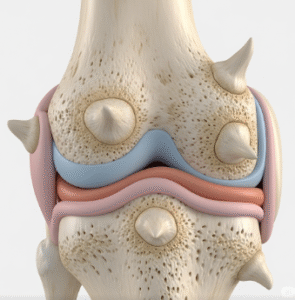In South Korea, environmental wellness has become one of the most important pillars of public health. As cities grow denser and industrial activity increases, the focus has shifted from just treating diseases to preventing them through cleaner, healthier environments. Among all environmental concerns, air quality stands out as a top priority — because what we breathe directly affects how we live, feel, and function.
Breathing clean air isn’t just a luxury — it’s a fundamental human need, essential for maintaining both physical vitality and mental clarity. Korea’s commitment to improving air quality and promoting environmental wellness shows how innovation, policy, and public awareness can come together to create a healthier future.
Understanding Environmental Wellness
Environmental wellness means living in harmony with our surroundings — reducing pollution, conserving resources, and making conscious choices that support sustainable living. It’s one of the core dimensions of wellness, alongside physical, emotional, and social health.
• Clean air, clean mind: Polluted air can cause fatigue, headaches, and anxiety, while clean air supports focus, mood, and cognitive function.
• Physical protection: Reducing exposure to harmful particles prevents lung and heart diseases.
• Community health: Environmental wellness involves shared responsibility — when cities breathe easier, so do their people.
Korea’s wellness philosophy emphasizes that true health starts from the environment around us, not just the habits within us.
The Challenge of Air Pollution in Korea
Like many industrialized nations, Korea faces ongoing challenges with air pollution. Fine dust — known locally as “미세먼지 (mise meonji)” — is one of the country’s most persistent problems. It comes from vehicle emissions, industrial processes, and cross-border pollution carried by wind.
• PM2.5 and PM10 particles are small enough to enter the lungs and bloodstream, increasing the risk of respiratory and cardiovascular diseases.
• Smog and yellow dust (from desert regions in China and Mongolia) can worsen allergies, asthma, and eye irritation.
• Air pollution is estimated to cause thousands of premature deaths each year, according to health authorities.
Recognizing the urgency, Korea has launched nationwide initiatives to tackle this crisis and improve environmental wellness.
Government Efforts for Cleaner Air
The Korean government is leading several large-scale programs to enhance air quality and promote sustainable urban living.
• Fine Dust Reduction Policy: Targets a 35% cut in air pollution by 2030, using renewable energy and electric vehicles.
• Green New Deal (2020): Focuses on reducing greenhouse gases, promoting eco-friendly transportation, and investing in clean energy infrastructure.
• Air Quality Monitoring Systems: The Ministry of Environment operates a network of advanced real-time sensors that measure air quality across the country.
• Public Alert Systems: Apps and digital signboards in major cities notify citizens about air quality levels and provide health recommendations.
Tip: You can check live air conditions through apps like AirVisual Korea or K-Air, which show daily PM2.5 levels and safety advice.
Smart Technology for Better Breathing
Korea’s technological innovation plays a major role in its environmental wellness movement. Smart cities are integrating IoT (Internet of Things) and AI-based systems to ensure cleaner, healthier air.
• Smart air sensors monitor pollutants in real time and adjust city ventilation systems automatically.
• AI-driven forecasting models predict pollution spikes, allowing authorities to act faster.
• Green transport systems, including electric buses and hydrogen cars, significantly reduce emissions.
• Smart buildings use air-purifying ventilation systems and eco-materials to maintain indoor air quality.
Example: In Songdo Smart City, intelligent monitoring networks control everything from traffic emissions to green energy use — helping residents breathe easier while reducing carbon footprints.
Urban Green Spaces: Natural Air Purifiers
Nature remains one of Korea’s most powerful tools for cleaner air. Expanding green spaces and urban forests helps reduce pollution naturally while improving mental well-being.
• Trees absorb pollutants like carbon monoxide and nitrogen dioxide.
• Urban forests regulate temperature and humidity, enhancing air freshness.
• Parks and green rooftops offer residents cleaner, oxygen-rich environments for exercise and relaxation.
Cities like Seoul and Busan have launched “Urban Forest Projects” — planting millions of trees around schools, hospitals, and highways. These green corridors not only clean the air but also reduce noise pollution and encourage outdoor living.
Idea: A short walk in a park can lower stress and improve lung function. Think of it as natural detox for the mind and body.
Indoor Air Quality: A Hidden Priority
While outdoor air pollution gets attention, indoor air can be even more polluted — especially in urban apartments and offices. Korea is addressing this through smart home technologies and building regulations.
• Air-purifying systems are now standard in new homes, schools, and hospitals.
• HEPA filters and eco-friendly paints reduce harmful indoor chemicals.
• Smart home air monitors automatically adjust ventilation based on pollutant levels.
• Traditional methods, like keeping plants such as snake plant and bamboo palm, remain popular for their natural purification effects.
Tip: Regularly open windows in early morning or after rainfall when air is cleaner, and use indoor plants to maintain oxygen flow.
Community Awareness and Lifestyle Changes
Environmental wellness isn’t just a government goal — it’s a national mindset. Koreans have become increasingly conscious of how their lifestyle choices affect the planet and public health.
• Mask usage: Once for COVID-19, now a common practice on high-dust days.
• Car-free initiatives: Many cities hold “No Car Days” to reduce emissions.
• Eco-consumer habits: People choose electric vehicles, air filters, and sustainable products to improve their surroundings.
• Public education campaigns: Schools teach students about climate responsibility and air quality awareness.
This collective effort reflects Korea’s belief that environmental health equals national health.
Healthcare and Environmental Integration
Korean hospitals and wellness centers are also playing a role in environmental health. Some facilities have introduced “Clean Air Clinics”, where respiratory patients receive both medical and environmental guidance.
• Doctors recommend air purifiers, masks, and diet plans that support lung function.
• Hospitals adopt green building standards to protect patients from pollution exposure.
• Wellness resorts, especially in Jeju and Gangwon, offer air detox retreats, combining forest therapy and breathing exercises.
These innovations bridge the gap between environmental care and personal well-being.
Future Vision: Korea’s Path to Clean Air and Wellness
Korea’s environmental wellness strategy is part of its 2050 Carbon Neutrality Plan, aiming to reduce pollution while promoting healthier lifestyles. The future will see:
• More electric and hydrogen-powered transportation across cities.
• Expansion of “smart eco-zones” with continuous air monitoring.
• Greater public participation in urban greening projects.
• Development of health-based environmental education for future generations.
By blending science, policy, and cultural responsibility, Korea is shaping a cleaner, more breathable future for its citizens.
Final Thoughts
Breathing clean air is one of the simplest yet most powerful ways to improve overall health. Korea’s dedication to environmental wellness shows how a nation can fight pollution not just through technology but through collective awareness and sustainable living.













